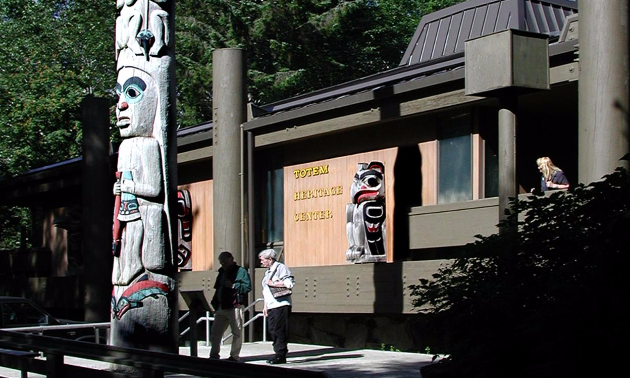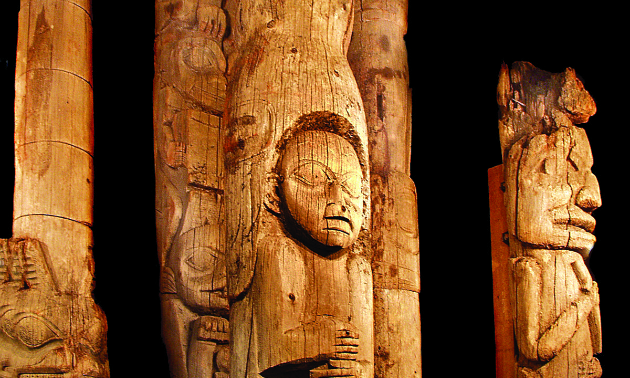Native Alaskan culture thrives in modern Ketchikan
Ketchikan, Alaska, celebrates its native art at the Totem Heritage Center

Ketchikan, Alaska, is a small city on Revillagigedo Island in the Tongass National Forest—a rainforest that features cedar, spruce and waterfalls. While it is a common cruise ship stop, most people never enjoy all that Ketchikan has to offer. An extended stay, however, transports you to a different way of life on the continent’s west coast. Ferries from the mainland transport visitors into town.
The mark of native Alaskans is visible everywhere in this small community. Much of Ketchikan’s history is rooted in art inspired by the ancestors and the unique beauty of Alaska. Ketchikan embraces native history, and puts its best pieces on display for all of its visitors to see. Local Tlingit artists are supplied the cedar and spruce products they need to create. Specifically, the Totem Heritage Center helps locals and travellers learn more about the history of the city and the area that surrounds it.
Totem Heritage Center
Traditional totem poles of the Indigenous people of Alaska are especially celebrated and admired in Ketchikan. Massive red cedar trunks found in the rainforest create the posts of these intricate sculptures. Red cedar is known for its rot-resistant properties, huge size and malleability under the knife. The monumental structures tell stories of Alaska’s past as the path of totems weaves south towards Washington State. Some of these totem poles are scattered around town, but most can be found at the Totem Heritage Center.
The Totem Heritage Center of Ketchikan, Alaska, is dedicated to the culture that envelops these totem poles. Interpretive tours introduce visitors to the art of the city’s ancestors. Visitors can also arrange to see the Totem Center’s vast collection of artifacts and photographs. For those who like a hands-on experience, the museum hosts classes teaching Tlingit, Haida and Tsimshian art, as well as basket making, weaving, carving and engraving. Classes are held regularly throughout the year. Sign up for one that interests you during your stay.
The pride and joy, however, of the Totem Heritage Center is its collection of preserved 19th century totem poles. The people of these villages moved to towns and cities like Ketchikan to be nearer to opportunities like work and schooling. These poles were relocated from the Tlingit villages near Ketchikan with the permission of the native elders. The information that the Totem Center presents alongside these original pieces was given to them by the elders themselves.
While the poles have deteriorated since their creation, the stories they tell remain clear and inspiring works of art. These totems tell stories of people that actually lived around Ketchikan, and the events that occurred here. They are pieces of history that have survived the test of time, and are now on display for the public to appreciate. Recently carved totem poles can be spotted around town, showcasing just how much this city appreciates its history.

The town’s second historical museum, the Tongass Historical Museum, is set to open its permanent exhibits in May of 2018. Until this point, only temporary exhibits are available.
Ketchikan Walking Tours
Ketchikan’s history is visible from the streets, so self-guided walking tours are a great option for history buffs who like to get outside and stretch their legs. The downtown tour alone has 40 sights on its list, including the red-light district of days past and, by contrast, historic churches. The West End walk guides visitors through life in the Ketchikan of years ago. Old houses, original storefronts, salmon swimming, and possibly even deer and bear sightings can be expected. Some tours are guided strolls along the seaside, while others tell stories of the ghosts that haunt the city.
Walking tours run year-round in Ketchikan. Self-guided walking tours are free; maps are available online. Guided walking tours are available through a variety of sources for a small price.






